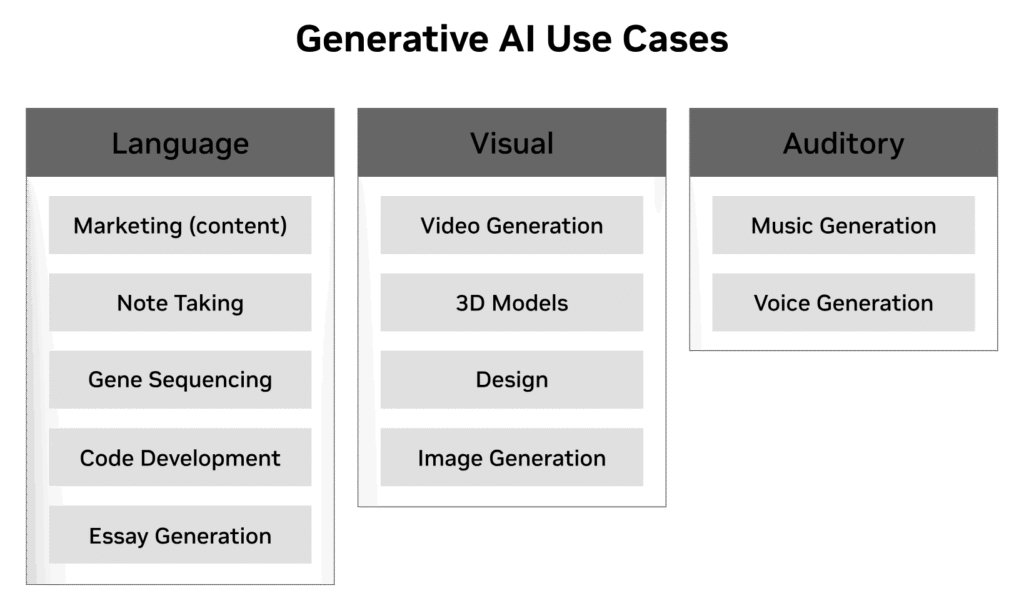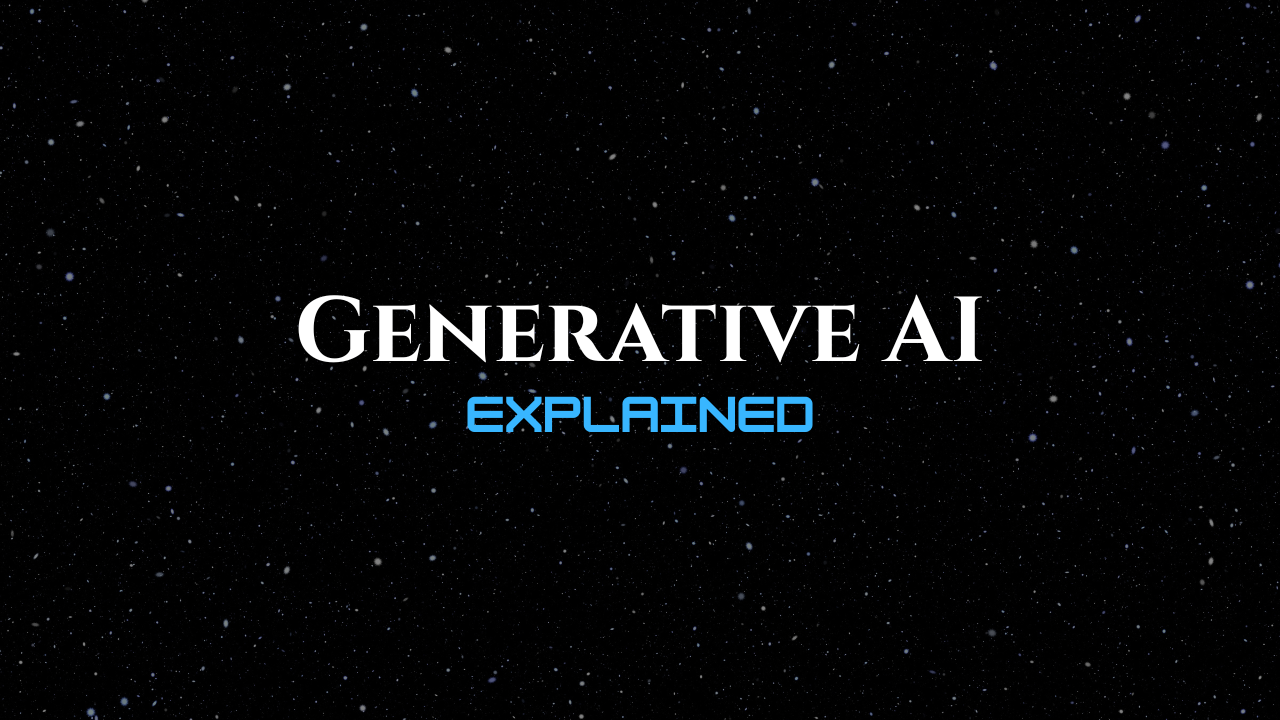Generative AI stands as a revolutionary branch of AI capable of creating original, never-before-seen content, including text, images, audio, and synthetic data. Unlike traditional AI that analyzes existing information, generative models learn the intricate patterns and structures within vast datasets, enabling them to generate novel outputs that often mimic human creativity and complexity. This innovative capability is fundamentally reshaping how content is produced and interacted with across numerous digital and physical domains.
Key Takeaways
- Novel Content Creation: Generative AI excels at producing entirely new text, images, audio, and synthetic data.
- Pattern Learning: It learns complex patterns from existing data to generate coherent and realistic outputs.
- Accelerated Development: Speeds up processes in design, content creation, and data generation.
- Diverse Applications: Applicable across language, visual arts, audio production, and synthetic data generation.
- Cost Reduction: Can significantly lower data labeling costs by generating synthetic data for AI model training.
- Industry Transformation: Impacting sectors from transportation and natural sciences to entertainment.
- Enhanced Efficiency: Automates tasks, saving time and resources for businesses.
Table of Contents
How Does Generative AI Work?
At its essence, generative AI functions by understanding the underlying distribution of the data it’s trained on. Imagine a model trained on millions of written articles; it doesn’t just store these articles, but rather learns the grammar, syntax, style, and thematic connections that define human language. When prompted, it can then construct entirely new sentences, paragraphs, or even full essays that adhere to these learned rules, appearing coherent and original.
A prominent technique behind much of today’s generative AI is the use of neural networks, particularly deep learning architectures for unsupervised or semi-supervised learning. Models like Generative Adversarial Networks (GANs) involve a two-part system: a “generator” that creates new data (e.g., an image) and a “discriminator” that evaluates if the data is real or fake. This adversarial process forces the generator to produce increasingly convincing outputs. Another powerful approach, seen in diffusion models, involves learning to reverse a process of gradually adding noise to data, effectively generating new data from random noise. These sophisticated mechanisms allow generative AI to manifest remarkable creative capabilities.

Key Applications of Generative AI Across Sectors
The versatility of generative AI allows it to impact a broad spectrum of industries, driving innovation and efficiency. Its capacity for on-demand content creation provides substantial value for organizations seeking to scale operations, enhance user experiences, and explore new frontiers in digital content. The range of applications continues to grow rapidly.
In the language domain, generative AI, especially through large language models (LLMs), is revolutionizing tasks like essay writing, code development, language translation, and even understanding genetic sequences. These models can quickly generate coherent and contextually relevant text, dramatically accelerating content creation and communication processes. For instance, a marketing team can leverage an LLM to draft multiple ad variations in minutes, a task that previously took hours.
For audio applications, generative AI can compose original songs, convert text into realistic speech, create sound effects from simple descriptions, and even recognize objects in videos to automatically add appropriate sounds. This capability opens new possibilities for content creators, game developers, and the music industry, enabling personalized soundtracks or highly realistic audio environments.
In the visual realm, generative AI is transforming graphic design, 3D modeling, and video production. It can generate realistic 3D images, customize avatars, produce dynamic video content, create various graphs, and illustrate concepts with flexible aesthetic styles. This flexibility offers immense creative freedom and efficiency for artists, designers, and visual content producers. Imagine designing a virtual environment for a game and letting AI fill it with unique, AI-generated flora and fauna.
Perhaps one of the most critical applications is the generation of synthetic data. This is particularly valuable for training other AI models when real-world data is scarce, privacy-sensitive, or fails to cover all necessary scenarios. Synthetic data can mimic the statistical properties of real data without revealing sensitive information, significantly reducing data labeling costs and accelerating model development in fields like autonomous driving and medical imaging. For example, training self-driving cars on synthetic data allows for exposure to millions of unique road conditions and unexpected events safely.
The benefits extend significantly to automotive, natural sciences, and entertainment. In automotive, generative AI helps create sophisticated 3D worlds and models for simulations and car development, enhancing the design and testing phases. Synthetic data is also crucial for training autonomous vehicles in diverse environments. In natural sciences, generative AI algorithms can explore and analyze complex datasets to uncover hidden patterns, accelerating scientific discovery. Across various sectors, generative AI automates and accelerates a multitude of tasks, ultimately saving significant time and resources for businesses and organizations by streamlining workflows and enhancing output quality.
“Generative AI’s ability to create rather than just process information marks a fundamental shift, empowering industries to innovate at unprecedented speeds,” stated a recent report from a leading technology consultancy on AI trends. This underscores the transformative power of this technology.
Future Outlook and Responsible Development
The trajectory of generative AI suggests an even more integrated role in daily life and industry. Ongoing research is focused on improving model efficiency, reducing computational demands, and enhancing the controllability and interpretability of generated outputs. As the technology matures, it promises to further democratize complex creative and analytical processes, making powerful tools accessible to a wider audience.
However, alongside its immense potential, generative AI also presents significant ethical and societal considerations. The creation of highly realistic synthetic content raises concerns about misinformation, deepfakes, and the authenticity of digital information. Ensuring responsible development includes implementing robust detection mechanisms for AI-generated content, fostering digital literacy, and developing clear guidelines around its use in sensitive contexts. Moreover, discussions around intellectual property, bias mitigation in training data, and the environmental impact of large-scale AI models are crucial for guiding the technology’s evolution toward beneficial outcomes for all.
Frequently Asked Questions
What types of content can Generative AI create?
Generative AI can create a wide array of content, including text (like essays, code, translations), images (such as 3D models, avatars, illustrations), audio (music, speech from text), and synthetic data for training other AI models.
How does Generative AI benefit businesses?
Generative AI offers businesses substantial benefits by automating and accelerating various tasks, from content generation to data synthesis. This leads to significant time and resource savings, enhanced creativity, faster product development, and the ability to train AI models more efficiently with synthetic data.
Is Generative AI only for creative tasks?
While often associated with creative tasks, Generative AI extends far beyond. It is also used for highly technical applications such as generating synthetic data for AI training, developing code, designing new molecular structures in healthcare, and optimizing engineering designs, making it a versatile tool across many non-creative domains as well.
- Generative AI Design Funding: Spacely AI Secures US $1M in Pivotal Round
- What Are AI Agents? AI Agents Explained
- Opendoor Technologies Stock Needs AI: The Future of iBuying Depends on Intelligent Tech
- Writing is Thinking: The Enduring Value of Human-Generated Scientific Writing in the Age of LLMs
- Protégé AI for UK Lawyers: 7 Powerful Ways It’s Transforming Legal Tasks

